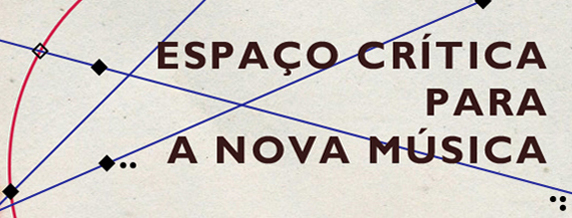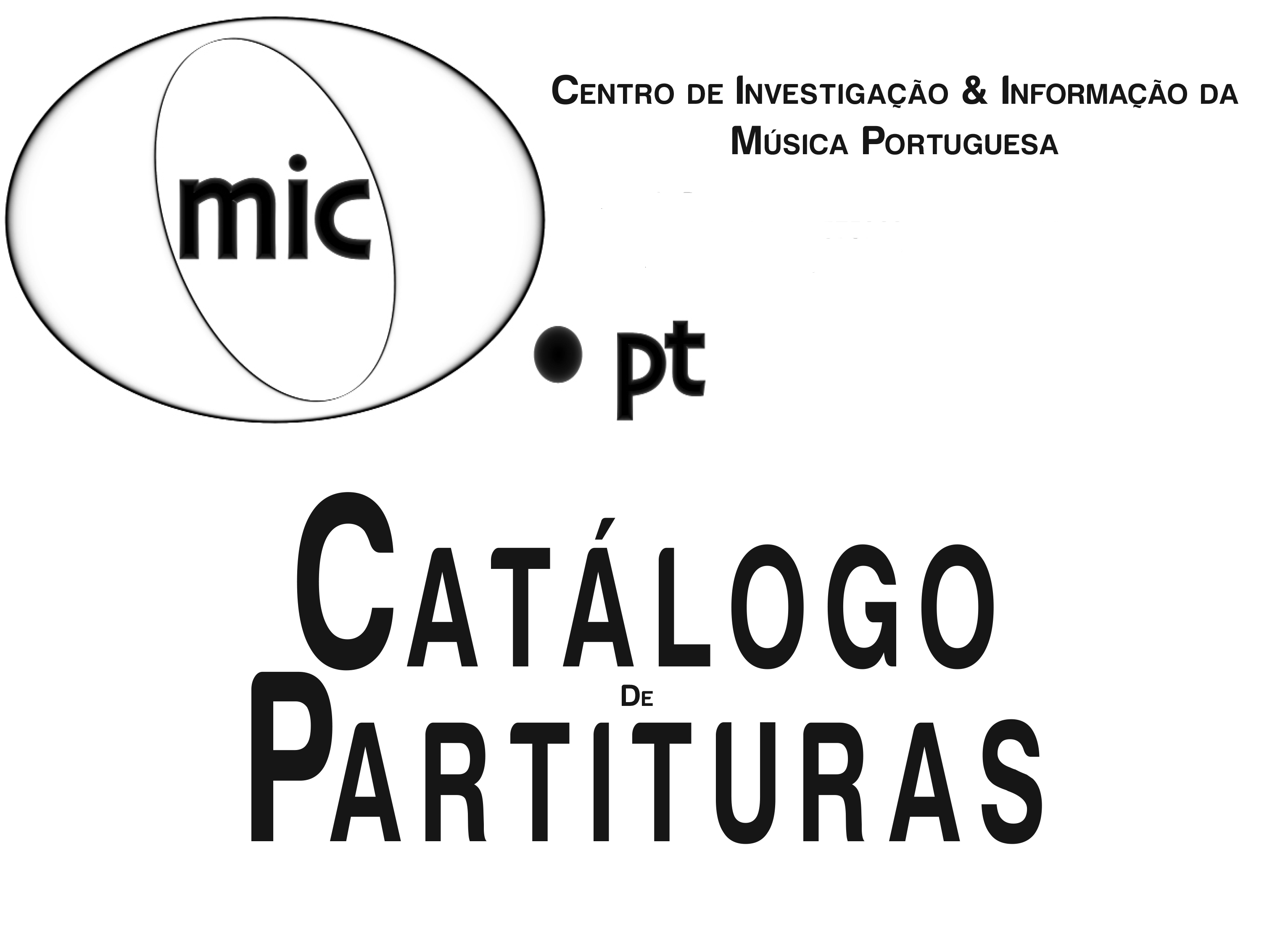Enrique X. Macías, Galician composer published by the MIC.PT, left us at the age of merely 37, 20 years ago in November 1995, at the peak of his creativity. Enrique X. Macías always maintained close relations with the Portuguese music environment – he was curator at the Serralves Foundation, Emmanuel Nunes’ biographer, and his music was regularly performed at the main festivals dedicated to contemporary art, such as the Gulbenkian Meetings for Contemporary Music and the Música Viva Festival, among others. His assets have been entrusted to the MIC.PT, Portuguese Music Research & Information Centre, and the composer’s last work was Clamores y Alegorías, a commission for orchestra by the International Music Festival on the Canaries. The work was premiered posthumously in 1996, in particular thanks to the effort of Miguel Azguime, Enrique X. Macías’ great friend, who organized the work’s score and parts. Recently, the Galician Symphony Orchestra conducted by Arturo Tamayo performed Clamores y Alegorías together with music by Anton Webern and Arnold Schönberg, on October 29 in the context of the Contemporary Music Days 2015 (Jornadas de Música Contemporânea 2015) in Santiago de Compostela.
Enrique X. Macías’ work and trajectory constitute a paradigmatic and profound gesture of rigour on the one hand and freedom on the other, joined with a constant affirmation of his individual authenticity and cohesion. Revealing, in a certain way, his attitude of persistent questioning, of the need for imminent invention and lucidity, the composer withdrew from his catalogue all of his works prior to 1981. Subsequently, he passed through 14 years rich in productivity and thus leaving us 29 works that constitute his final artistic legacy. Presently, the major part of his work is available on the MIC.PT website run by the Portuguese Music Research & Information Centre, whose online score catalogue includes 20 works by Enrique X. Macías – solo pieces, chamber music, and works for large orchestra such as Clamores y Alegorías (1995), Exequias (1992/94), or Duplo (1991/92).
It is in fact surprising that the recent anniversary, 20 years after Enrique X. Macías’ death, has passed practically unnoticed, and that his work continues absent in the repertoires of performances dedicated to the music of our time, hence expecting an urgent attention on the part of researches, programmers, performers and audiences fascinated with new music.
As opposed to certain critiques directed towards his music that consider it to be radical, as a matter of fact one cannot find any 20th century revolutionary spirit in Enrique X. Macías’ work, but rather, yes, an honest and restless personality, engaged with the language of the time when he lived and worked. What’s evident here is the influence of structuralism, new complexity and the French school, following the straight and clairvoyant line not only of Pierre Boulez but also Tristan Murail. However, as the composer says in the interview realized by the musicologist and critic, Guillermo García-Alcalde, and published in December 1991 in the Faro de Vigo journal: “I prefer not to position or label myself. This is the function of the critics, and I say this without resentment or irony. My interests and points of reference can revolve in the orbit [of structuralism], but the composition is much more than that. Even a structuralist process presupposes surprises for the author himself. (…) Everything seems to be disposed in a logical perspective but, suddenly, without knowing why, the surprise emerges. When the structure defines the construction of the work, this stroke is the response to a need for modifying the structural order. Therefore, the structure is flexible, malleable and permeable to an inventive thought that on the other hand subjects itself to it. It is a flux that comes and goes, and with which one plays. Now, for me it is fundamental to conceive a formal support in the origin. Without any doubt I belong to this current”[1].
A turning point in Enrique X. Macías’ trajectory is the work Itinerary of Light for flute, clarinet, horn, violin, viola, cello and electronics, composed in 1995 in response to a commission by the Galician Contemporary Art Centre. Apart from structuralism, what’s notable here is a tendency towards the stylisation that combines timbral and spatial principles. Remaining emblematic in Enrique X. Macías’ music language, this work initiates, simultaneously, a new phase in his path, above all when it comes to the elaboration of a new material without resorting to the one from previous pieces. What could be the destiny of this journey initiated with the Itinerary of Light? This question will certainly remain unanswered, nevertheless, the text that the composer published as the work’s programme note reveals us, in a kind of self portrait, the enigmatic codes for the comprehension of his life and work: “Silence, only silence. The trajectory of silence. There are no traces of sound. Only the silence. Looking for the unknown, the most authentic, the most desired sound, although unknown. Chronology of a biography. Memory of a biography. Necessity of memory. Memory and perspective of the time. Not casual concretisation of a time, in order to do the necessary, in order for it to become necessary. The work should live its independence, becoming a live being with all its perfections and imperfections. The rewriting of an imperfection as a new perspective and realisation of a potential. The work grows and follows its own itinerary. Open/close. Silence/sound. Dark/bright. Mirror. Figures in the mirror”[2].
Throughout his short but fertile and intense trajectory, Enrique X. Macías was distinguished with numerous awards, distinctions, and honourable mentions at the Gaudeamus International Composers’ Award (the Netherlands, 1981 and 1984), the Cristobal Halffter Composition Competition (Spain 1983), the Fernando Pessoa International Composition Competition (Portugal 1985), the Juan March Foundation Young Composers’ Tribune (Madrid 1983 and 87), as well as at the Spanish Authors’ Society Composition Competition (1987). In 1985 the composer represented Spain at the UNESCO International Rostrum of Composers held in Paris. It is equally indispensable to highlight the commissions he received from the Calouste Gulbenkian Foundation, Groupe de Recherches Musicales in Paris, Radio France, the Ministry of Culture in Spain, Fine Arts Circle in Madrid, the Antidogma Festival in Turin, and the Santiago de Compostela University, among many others. His music was also recorded for various radios in different parts of Europe, having been programmed at international events and concert halls of relevance, such as: the Biennale in Venice, Gaudeamus Muziekweek, Contemporary Music Meetings in Lisbon, Tage für Neue Musik, INA/GRM Cicle Acousmatique, Almeida Theatre/London Sinfonietta, among others.
Within Enrique X. Macías’ path one can also emphasize his participation at the Summer Courses for New Music in Darmstadt, between 1980 and 84, as well as the residencies at the electronic music studios at the Finnish Radio and the Cracow Music Academy. Between 1985 and 1991 he was invited composer at the Institute of Sonology in Utrecht, Groupe Recherches Musicales in Paris and STEIM in Amsterdam, having also worked at the Espace Musical and the IRCAM summer internship.
Enrique X. Macías was certainly one of the most singular and charismatic figures of the Galician music from the margin of the 20th and 21st centuries. His production was always accompanied by a profound, philosophical and theoretical reflection, towards developing and maintaining his own unity as far as composition is concerned. In this context the composer established the idea that in fact it wasn’t possible to teach somebody to compose and, more specifically, to create. According to Enrique X. Macías, the aspect absolutely fundamental and vital in the path of every composer is the self-taught, solitary approach in the search for one’s own voice. “Clinging to a system means becoming an epigone of the one who invented it. To my mind, to create means to subvert the system, just as Mozart did it in his time. Without any doubt there were moments of regression among the greatest, and the case of Bach is paradigmatic: while all of his sons were composing within the style of the Mannheim School, he persisted on employing the counterpoint and thus left us with such an ingenious legacy as the Art of Fugue. What does this mean? It means that one needs to be consequent with regards to the acquisition of a personal language. It may be full of influences and references, yet the authentic creation is born from an individual reflection, which takes up all the possible risks before the society. Either we want it or not, they will put a red or black cross on our head: one will, or not, be on a roll, but as composer one should move away from it and achieve coherence at whatever expense. As a living being, each work has its own destiny. If it has the capacity to explain itself before an audience it shall live; otherwise it will die”[3].
Enrique X. Macías was born in Vigo in 1958. He died in the same city in 1995.
Enrique X. Macías on the Música Hoje radio programme (RTP . Antena 2): RTP Play
© MIC.PT, January 2016
---
1 Enrique X. Macías in the interview realised in 1991 by Guillermo García-Alcalde, whose fragments are available in the booklet of the CD released in 1993 by the Miso Records (mcd 005), and which includes the composer’s following works: Nobilissima Visione II/Postludios (1989/91) and Cadências e Interlúdios/Percurso I (1989-92/...)
2 Prorgamme note for the work Itinerary of Light written by Enrique X. Macías, whose fragment is available in the text by Miguel Azguime published in the booklet of the monographic double CD album by the Miso Records (mcd 019/020.08), dedicated to Enrique X. Macías’s music. It was released in 2008 on the occasion of the composer’s 50th anniversary; Portuguese translation: Jakub Szczypa
3 Enrique X. Macías, op. cit.





